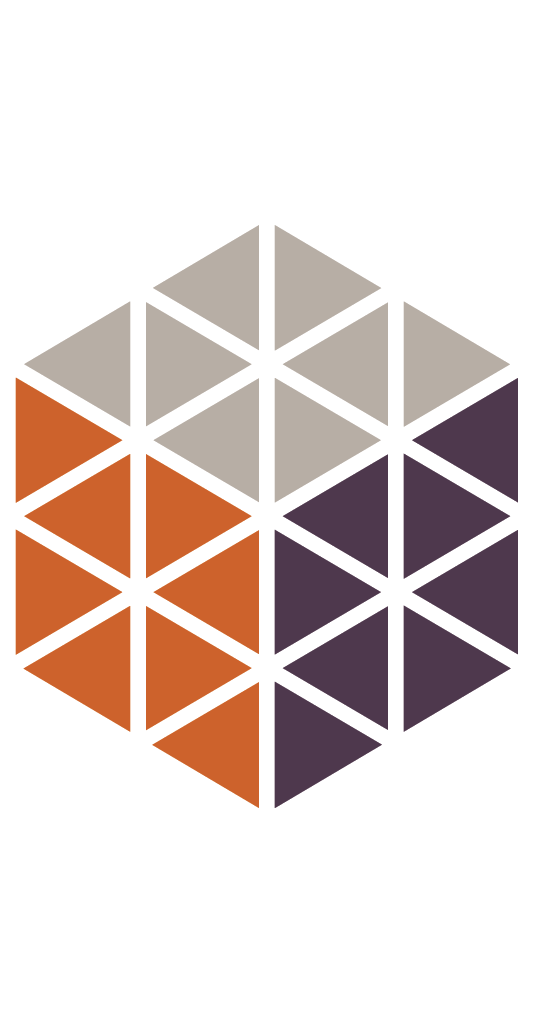The underlying causes of
addiction are mostly genetic and environmental. A person’s genetic makeup can make him or her more prone to sensation-seeking
behavior, more compulsive mand more vulnerable to addiction. Life events such as trauma, stress and early exposure to
substances of abuse can also affect a person’s vulnerability.
Addiction causes physical and mental side effects. Physical side effects include
cravings and withdrawal symptoms, and mental side effects include increased stress and feelings of depression, anxiety
or loneliness.
Effective treatment focuses on the genetic and environmental causes of addiction. It also treats the physical and mental
side effects.
Detox keeps patients physically safe and as comfortable as possible during withdrawal. Therapy treats the mental
aspects. Depending on the severity of the disease, detox can remove cravings and withdrawal symptoms in one to three
weeks. However, most people require months or years of continuous counseling to recover from the mental side effects.
The main purpose of counseling and therapy for addiction is to address the underlying causes of the disease to prevent them
from causing
relapse. Although detox is a vital component of treatment because it helps patients handle withdrawal and ease cravings,
it does nothing to address the factors that led to drug abuse in the first place.
Research during the last 30 years has led to advances in evidence-based behavioral therapy for alcohol and drug addiction.
The therapies have proved effective in treating substance use disorders in addition to co-occurring mental health issues
such as depression, anxiety and obsessive-compulsive disorder.
Marta Nelson of The Recovery Village defines evidence-based treatment and explains that these treatments are researched
and proven effective.
Today, therapy for substance use disorders is available in a variety of settings, including
inpatient residential rehab programs, outpatient rehab programs, sober living communities, private practices and
a variety of support groups.
The goal of therapy during a 30-, 60- or 90-day rehab program is to prepare individuals in recovery for life after intensive
treatment, but many patients require continued therapy for many months or years after rehab.
Therapy often decreases in frequency and duration as a person learns to cope with the causes of his or her addiction and
to handle life’s stressors. However, many experts believe a person never fully recovers from addiction. People who experience
a traumatic event or increased stress should turn to therapy to decrease the chances of relapse.
Therapy isn’t a one-size-fits-all process. Different approaches are more appropriate and effective for different people,
depending on their age, type of addiction and the factors that contributed to their addiction.
Nanci Stockwell of The Recovery Village talks about the types of therapy used during addiction treatment.
Behavioral Therapies
Addiction treatment centers use behavioral therapies more than any other therapeutic technique, according to the
2014 National Survey of Substance Abuse Treatment Services. Behavioral therapies help patients understand the causes
of high-risk behavior and develop tools for avoiding or coping with high-risk situations.
Cognitive Behavioral Therapy
Cognitive behavioral therapy focuses on learning to reduce problematic behavior associated with substance abuse.
A key theme in
CBT is anticipating risky situations and applying coping strategies, such as avoidance or self-control,
to prevent relapse.
CBT is one of the most popular therapies in addiction medicine, and counselors use it to treat a variety of addictions.
During CBT, patients learn to recognize and modify risky behavior by using a variety of skills. They learn the underlying
causes of problematic behavior so they can fix the problems at their source. They’re able to recognize cravings or
triggers and develop strategies for handling those situations. Research shows that patients who learn skills during
CBT are able to apply them during real situations later in life.
Dialectical Behavior Therapy
Dialectical behavior therapy is effective for patients who struggle to regulate emotions and have thoughts of self-harm
or suicide. The therapy emphasizes an acceptance of uncomfortable thoughts, feelings or behaviors to allow patients to
overcome them.
- Mood disorders
- Personality disorders
DBT involves relaxation techniques, such as
yoga, that help the patient become more aware of thoughts and emotions. They learn skills such as controlled breathing
and muscle relaxation to tolerate self-destructive thoughts or urges. The goal is to decrease the frequency and severity
of self-harming behavior and encourage healthy change.
The Matrix Model
The Matrix model gives individuals in recovery from stimulant addiction a framework for maintaining abstinence. It’s
primarily used in patients recovering from methamphetamine or cocaine addiction.
Therapy using the Matrix model involves a variety of evidence-based therapies that promote relapse prevention and encourage
family therapy, education and support-group participation. Therapy sessions usually include detailed worksheets or
manuals for the patient to reference.
The therapist is a teacher and coach, developing a positive relationship with the patient and promoting behavioral change.
The therapist promotes dignity and self-worth in the patient who avoids confrontational communication. However, the
Matrix model does involve drug testing.
Eye Movement Desensitization and Reprocessing
Eye movement desensitization and reprocessing therapy alleviates distress associated with traumatic memories
and symptoms of post-traumatic stress disorder, which commonly cause or worsen substance use disorders.
EMDR therapy helps the patient reprocess the memory of a traumatic event so it is less painful. The patient performs external
eye movements while thinking of the traumatic event. The process teaches the brain to associate the memory with less
upsetting feelings so it can heal.
Studies indicate EMDR can relieve symptoms of PTSD after three 90-minute sessions. Patients with severe PTSD symptoms,
such as combat veterans, usually require more sessions than individuals with less severe symptoms.
Motivational Therapies
Motivational therapies are the second-most-common therapies used by drug rehab facilities. The therapies help patients
find internal motivation to begin or continue treatment. They often provide incentives for
maintaining sobriety and are used in combination with behavioral therapies.
Motivational Enhancement Therapy
Motivational enhancement therapy is a specific type of
motivational interviewing for substance abuse. It reduces patients’ doubts or uncertainties about engaging in treatment or stopping
drug use. The goal is to encourage change as opposed to teaching patients how to change.
MET begins with an assessment and is followed by two to four individual counseling sessions. The therapist begins by
eliciting motivational statements. He or she supports the patient’s self-motivation, and the pair discusses ways
to cope with risky situations. The remaining sessions involve monitoring change, reviewing strategies and continuing
support of internal motivation.
Other forms for therapy, such as CBT, commonly follow MET. It’s effective at getting people into treatment but should
not be the sole therapeutic approach.
Contingency Management and Motivational Incentives
Contingency management and motivational incentive approaches to therapy reinforce positive behavior with tangible
rewards. The therapies augment other forms of therapy to increase abstinence during counseling.
- Alcohol
- Cocaine
- Methamphetamine
The therapies incorporate vouchers or chances to win prizes to promote abstinence. Voucher-based therapy involves rewarding
clean drug screens with vouchers that can be exchanged for food, movies and retail goods.
Prize-based incentives reward drug-free screens with a chance to win a prize by drawing from a bowl. Some experts worry
that prize-based incentives might promote gambling behavior, but studies do not show an association between the therapy
and gambling.
Community Reinforcement
The community reinforcement approach plus vouchers is commonly used on an outpatient basis. The therapy involves motivational
incentives in the form of familial, social and recreational rewards in addition to vouchers to motivate abstinence
from substance abuse.
The goal is to help patients maintain sobriety so they can develop skills for
long-term recovery.
CRA usually lasts 24 weeks, and patients attend individual counseling once or twice per week. During counseling sessions,
they learn skills to minimize substance abuse, improve relationships, develop hobbies, build social support and receive
vocational counseling. Patients also undergo urine tests two or three times per week and are awarded vouchers for
retail goods for drug-free tests.
Family Counseling and Therapies
Counseling and therapy for addiction often involve
counseling for family members in addition to the person in recovery. Therapy teaches families the underlying
causes of addiction, how to reduce risk factors for relapse and how to properly support their loved one in recovery.
Family counseling is beneficial for family members negatively affected by another person’s addiction. It helps each family
member learn about the impact his or her actions have on others, and it teaches families how to effectively communicate
and function.
Family Behavior Therapy
Family behavior therapy addresses problems that affect the entire family. The goal is to reduce risk factors for addiction,
such as unemployment, family conflict, abuse and conduct issues. It uses techniques such as contingency management
and behavioral contracting, in which a patient agrees to a written contract with a therapist.
Therapy sessions involve multiple family members, such as spouses or parents and their children. Therapists teach strategies
and skills for improving communication and the living environment. Each patient sets behavioral goals that are reviewed
during each session by other family members.
Multisystemic Family Therapy
Multisystemic family therapy is primarily used to correct severe antisocial behavior in children and adolescents affected
by addiction.
- Correct attitudes toward drug abuse.
- Improve family discipline.
- Teach conflict resolution skills.
- Eliminate parental drug use.
- Improve school attendance and performance.
- Eradicate environmental prevalence of drugs.
Treatment occurs in natural environments such as the home, school or neighborhood, and it has been proved to reduce rates
of incarceration and substance abuse.
Multidimensional Family Therapy
Multidimensional family therapy is an outpatient
treatment for teens who abuse drugs. It focuses on individual, family, peer and community networks to reduce
problematic behavior and encourage healthy behavior.
MDT occurs in clinics, family court, school or homes. It usually involves individual sessions and family sessions in
which the adolescent learns decision-making and problem-solving skills. During family sessions, parents examine their
parenting style and learn to positively and effectively influence healthy behavior.
Brief Strategic Family Therapy
Therapists use brief strategic family therapy to reduce family interactions that support or exacerbate
teen drug abuse or problematic behavior. Such behavior includes problems at school, delinquency, association
with anti-social peers, aggressive tendencies and high-risk sexual behavior.
BSFT is founded on the concept that each family member’s behavior affects the entire family. The therapist identifies
and corrects family interactions that provoke problematic behavior. The approach can be used in mental health facilities,
rehab clinics, homes and a variety of other settings.
Functional Family Therapy
Functional family therapy is also based on the idea that dysfunctional family interactions create and support problematic
behavior. The goal of FFT is to improve communication, problem-solving skills and parenting skills. Each therapy
session involves the adolescent and one or more family members.
FFT engages families in the treatment process to encourage motivation for change. It also incorporates contingency management
techniques and other types of behavioral therapy.
Adolescent Community Reinforcement Approach
Adolescent community reinforcement approach is similar to the community reinforcement approach used for adults, but it
involves standardized procedures for improving communication, solving problems and
coping with stress. Role playing and behavioral rehearsal techniques are key aspects of the therapy.
Assertive Continuing Care
Assertive continuing care involves weekly home visits during the three-month period after a teenager is discharged from
a drug rehab facility. The therapy teaches teens and their caregivers problem-solving skills, communication techniques
and other tools for promoting recovery.
Ready to begin your counseling?Take the first step and start your recovery today.
Get Help Now
12-Step Facilitation Therapy
Therapists often encourage patients to participate in 12-step programs such as
Alcoholics Anonymous and
Narcotics Anonymous to support long-term recovery.
Such
12-step programs are founded on a few key principles: Individuals with substance use disorders have no control
of the disease, must surrender to a higher power and actively participate in support group meetings. Many therapists
refer patients to 12-step groups, and some treatment facilities host support group meetings.
Alternative & Holistic Therapies
Decades of scientific research on addiction treatment have found behavioral, motivational and family-based therapies
to effectively treat substance use disorders. Other therapies such as EMDR and 12-step facilitation therapy are also
backed by a plethora of research.
There are no other evidence-based replacements for these traditional therapies, but studies do support a variety of complementary
treatments for addiction.
Yoga, Meditation and Mindfulness
Yoga is an exercise that emphasizes controlled breathing and body postures to promote physical strength, concentration
and serenity. Clinical trials involving yoga and mindfulness found the therapies were effective complements to preventing
and treating addiction, according to a study published in Complementary Therapies in Medicine.
A meta-analysis of studies on meditation published in Alcoholism Treatment Quarterly found that the technique can reduce
stress, anxiety, tobacco smoking, and alcohol and
drug abuse. Additionally, a clinical trial on mindfulness therapy published in the Journal of Consulting and
Clinical Psychology found yoga was a feasible and effective treatment for opioid abuse and chronic pain.
Animal Therapy
Several therapies for addiction involve animals. During equine therapy, one of the most popular animal-assisted therapies,
patients interact with horses. The horses give feedback through nonverbal cues. The patients learn to understand
their own emotions and overcome negative emotions such as frustration and fear.
Other therapies involve people in recovery voluntarily helping animals at shelters or having animals during traditional
therapy sessions. Research indicates animal- or pet-assisted therapy can improve a patient’s participation in treatment
and willingness to talk about any history of trauma or substance abuse.
Animal-assisted therapy can also reduce stress,
fear and anxiety.
Acupuncture
Acupuncture therapists insert fine needles into the body to stimulate healing. Acupuncture is a complementary treatment
option at several rehab facilities, and people in self-help programs also report benefits from acupuncture.
A study of patients in recovery from cocaine addiction published in the Archives of Internal Medicine found patients
assigned to acupuncture therapy were more likely to abstain from cocaine use. Another study published in the American
Journal of Public Health found acupuncture significantly improved tobacco smoking cessation rates.
Music Therapy
Music therapy techniques include lyric analysis, songwriting, musical games and ad-libbing music based on emotions. During
music therapy, patients engage emotions, motivations and
barriers to treatment through lyrics and melody.
Research on music therapy has found songwriting can promote healthy change, drumming can promote relaxation and dancing
can reduce stress, anxiety and symptoms of depression. A study published in the Drug and Alcohol Review found music
therapy was positively associated with a patient’s willingness to participate in treatment.
Art Therapy
Patients express themselves by drawing, painting, sculpting or creating art journals during art therapy. Art therapy
techniques also include stress painting, in which patients paint during periods of high stress, and the creation
of incident drawings: illustrations of events that transpired during substance abuse.
Some therapists emphasize interpretation and contemplation as therapeutic techniques during art therapy. Studies on art
therapy indicate it can decrease denial, treatment avoidance and
shame. It can also be used to facilitate group discussions and motivate change.
Horticultural Therapy
Horticultural therapy involves gardening and other plant-based activities led by a trained therapist. Studies indicate
horticultural therapy, also referred to as garden therapy and therapeutic gardening, can enhance critical thinking,
improve attention span, decrease stress, reduce anxiety and improve social integration.
Effective
substance abuse treatment requires patients to address all underlying causes of addiction. Most patients undergo multiple
therapies to address all of the causes. Counseling and therapy are essential tools in the recovery process and have
been proved to help individuals in recovery.
Medical Disclaimer: DrugRehab.com aims to improve the quality of life for people struggling with a substance use or mental health disorder with fact-based content about the nature of behavioral health conditions, treatment options and their related outcomes. We publish material that is researched, cited, edited and reviewed by licensed medical professionals. The information we provide is not intended to be a substitute for professional medical advice, diagnosis or treatment. It should not be used in place of the advice of your physician or other qualified healthcare provider.
 Addiction
Addiction
 Treatment
Treatment
 Faith & Religion
Faith & Religion
 Active Recovery
Active Recovery
 Our Community
Our Community



